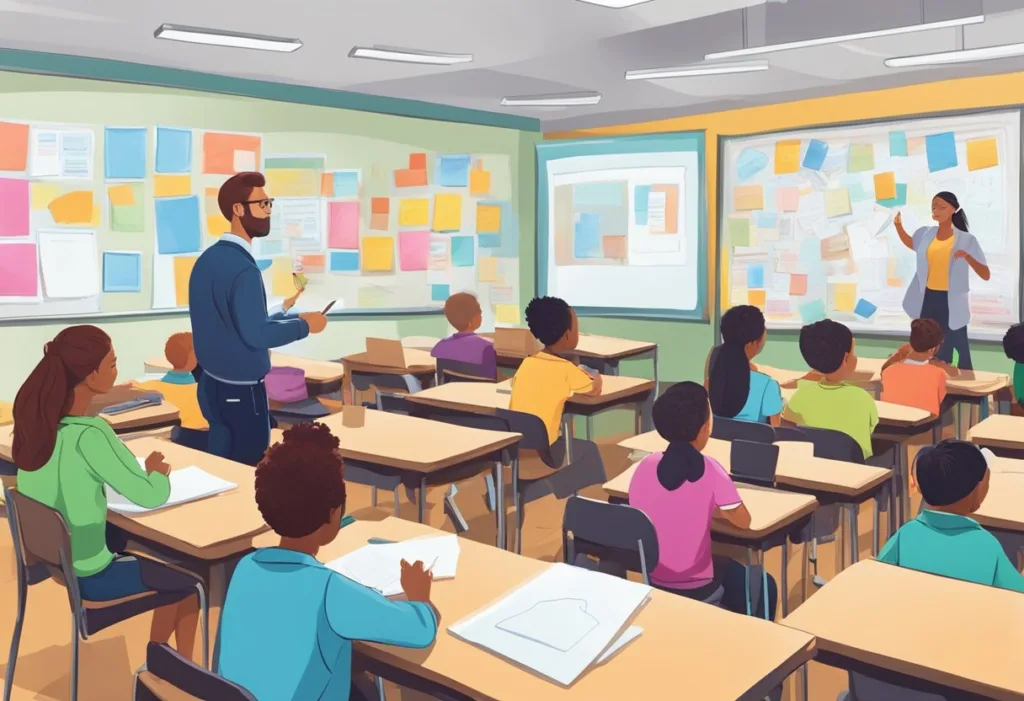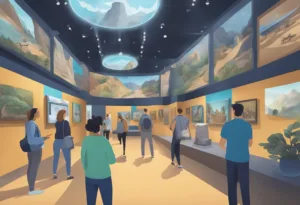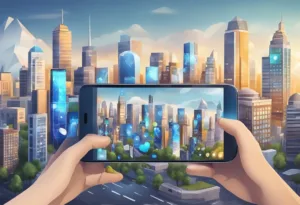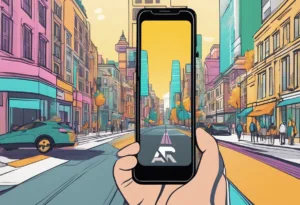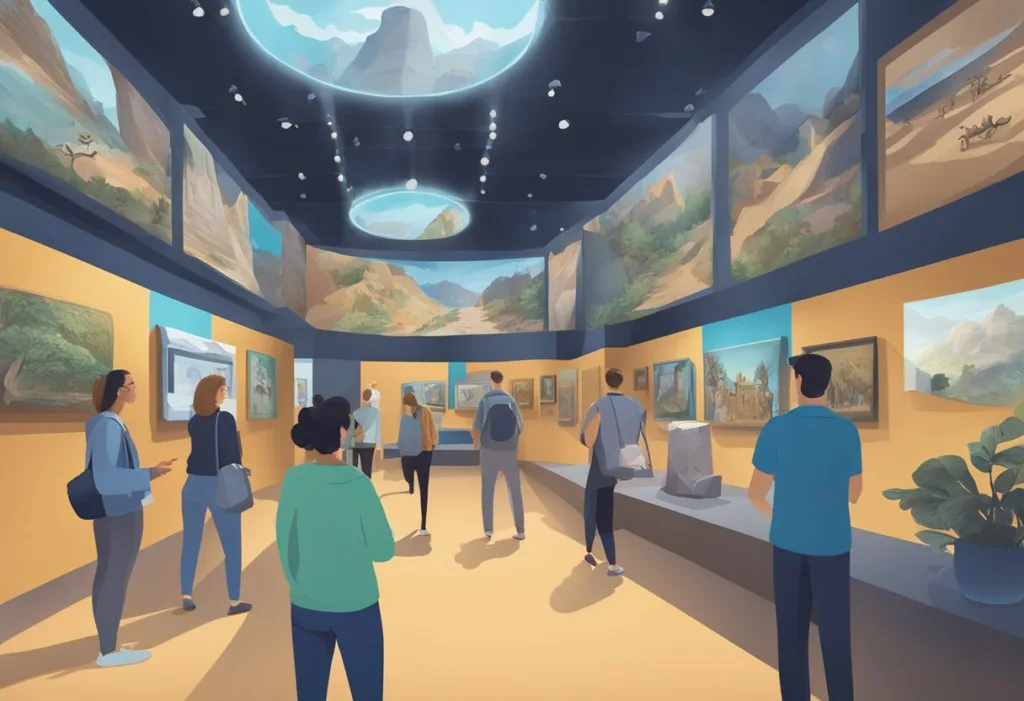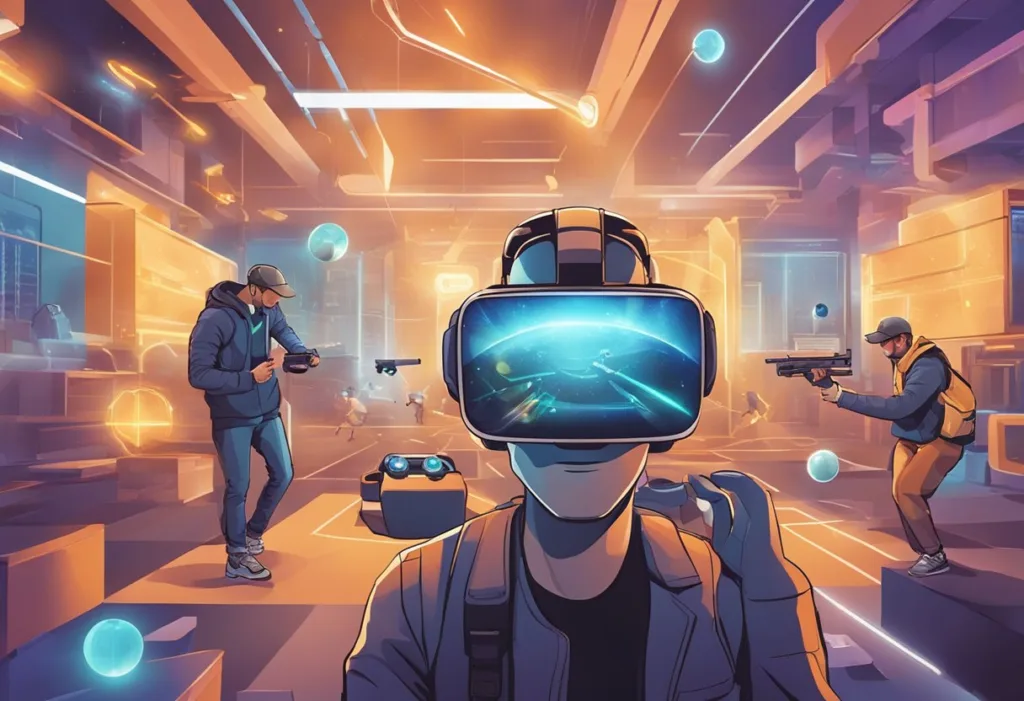Augmented reality (AR) is a technology that has been around for a while, but it is now finding its way into the education sector. AR is a technology that overlays digital information onto the real world, creating a blended environment that can be used for learning. AR is being used in various ways in education, from enhancing student engagement to improving accessibility and inclusion. In this blog post, I will discuss AR for education and share with you 10 ways AR can be used for education to make learning easier.
AR is an innovative technology that can be used in a variety of learning environments. It can be used to create interactive and engaging learning experiences that can help students understand complex concepts. AR can also be used to create simulations that allow students to practice real-world scenarios in a safe and controlled environment. Educators can use AR to create personalized learning experiences that cater to the needs of individual students.
Fundamentals of AR in Education
Augmented Reality (AR) is a technology that overlays digital elements onto real-world objects to enhance what users see and experience in the world around them. It is rapidly transforming every stage of education, making complex concepts more accessible and engaging. In this section, we will explore the fundamentals of AR in education, including how to use AR for education and the difference between AR and VR in the classroom.
How to use AR for education
AR technology can be used to enhance learning in various ways. For example, AR can be used to create interactive textbooks, where students can scan images in their textbooks to access additional information, videos, or 3D models. AR can also be used to create virtual field trips, where students can explore different parts of the world without leaving the classroom.
AR can also be used to create immersive learning experiences, where students can interact with digital objects in real-time. For example, medical students can use AR to practice surgery on a virtual patient, while engineering students can use AR to design and test virtual prototypes.
AR vs. VR in the Classroom
AR and VR are often used interchangeably, but they are not the same thing. VR creates an entirely artificial environment, while AR overlays digital elements onto the real world. In the classroom, AR is often a better choice than VR because it allows students to interact with the real world while still accessing digital information.
AR technology is also more accessible than VR technology, as it does not require expensive headsets or other equipment. Also, AR is more versatile than VR, as it can be used in a variety of settings, from the classroom to the laboratory.
AR technology has the potential to revolutionize education, making learning more accessible and engaging for students of all ages. By using AR technology, educators can create immersive learning experiences that help students understand complex concepts and prepare them for the challenges of the future.
10 Ways Augmented Reality can be used for education
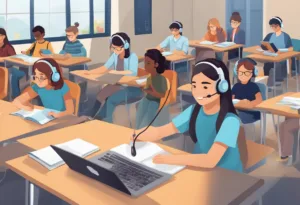
- Enhancing traditional book learning with AR overlays
- Facilitating complex problem-solving with interactive models
- Enriching art and cultural education through virtual galleries
- Offering immersive storytelling for literature and history
- Supporting special education with tailored learning experiences
- Visualizing mathematical concepts with 3D representations
- Providing hands-on skill training in vocational studies
- Encouraging environmental education with interactive ecosystems
- Aiding language acquisition with contextual AR scenarios
- Gamifying classroom activities to boost motivation and engagement
Enhancing Traditional Book Learning with AR Overlays
Augmented reality can transform conventional book learning by embedding digital overlays directly onto the pages of textbooks. When scanned with an AR-enabled device, these pages can come alive with animations, video content, and interactive 3D models that provide a deeper understanding of the material.
This approach not only captures the attention of digital-native students but also allows for a more dynamic and engaging exploration of the content. For instance, a student reading about cellular biology could see a cell’s components in three dimensions and possibly even interact with them to learn about their functions.
Facilitating Complex Problem-Solving with Interactive Models
Using AR to facilitate complex problem-solving allows students to tackle intricate challenges in a visual and tangible way. Interactive models can be manipulated in real-time, giving learners the opportunity to experiment with different solutions and observe the outcomes.
This method is particularly effective in fields such as engineering or physics, where spatial reasoning and the impact of variables are crucial. AR models can demonstrate principles like force, motion, and energy in a way that is both intuitive and informative.
Enriching Art and Cultural Education Through Virtual Galleries
Augmented reality offers a unique way to enrich art and cultural education by creating virtual galleries that can be accessed from anywhere. Students can view and interact with famous artworks or cultural artifacts in high detail, learning about their history and significance without the need for physical travel. This approach not only makes art and cultural education more accessible but also allows for a personalized experience where learners can spend as much time as they wish with each piece, free from the constraints of a crowded museum.
Offering Immersive Storytelling for Literature and History
Immersive storytelling through AR can bring literature and historical events to life, providing a compelling narrative experience that enhances comprehension and retention. By visualizing scenes from a novel or reenacting historical moments, students can develop a deeper emotional connection to the material. This method of storytelling can also help to contextualize complex themes and encourage empathy by placing learners in the shoes of characters or historical figures.
Supporting Special Education with Tailored Learning Experiences
Augmented reality can be a powerful tool in supporting special education by offering tailored learning experiences that cater to the individual needs of students with disabilities. AR can provide customizable scenarios that accommodate various learning styles and challenges, from sensory processing difficulties to cognitive impairments. By creating an engaging and adaptable learning environment, AR can help to overcome barriers to education for students with special needs, allowing them to learn at their own pace and in a manner that suits them best.
Visualizing Mathematical Concepts with 3D Representations
Mathematics can often be an abstract subject for students, but AR can aid comprehension by visualizing mathematical concepts with 3D representations. Geometry, algebra, and calculus become more tangible when students can manipulate figures and equations in a spatial context. This visualization can demystify complex ideas and make mathematical relationships clearer, facilitating a better understanding and stronger grasp of the subject.
Providing Hands-On Skill Training in Vocational Studies
Vocational studies often require hands-on skill training, which can be enhanced with AR technology. Students learning trades such as carpentry, plumbing, or automotive repair can benefit from AR simulations that mimic real-world scenarios. These simulations allow for safe practice and repetition, which are crucial for mastering practical skills. AR can also provide instant feedback and step-by-step guidance, reducing the learning curve and preparing students for actual work environments.
Encouraging Environmental Education with Interactive Ecosystems
Environmental education can be significantly more engaging with the use of AR to create interactive ecosystems. Students can explore different habitats, witness the effects of environmental changes, and understand the interdependence of species within an ecosystem. This interactive approach promotes a greater awareness of environmental issues and the importance of conservation, providing a compelling argument for the protection of our planet through a vivid and memorable learning experience.
Aiding Language Acquisition with Contextual AR Scenarios
Augmented reality can assist in language acquisition by providing contextual scenarios that mimic real-life situations. Learners can practice vocabulary and grammar in a setting that demonstrates proper usage, enhancing their ability to communicate effectively in the target language. This method of language learning is not only more engaging but also more practical, as it prepares students for actual conversations and interactions they are likely to encounter.
Gamifying Classroom Activities to Boost Motivation and Engagement
Gamification is a well-known technique to boost motivation and engagement, and AR can take this to the next level by turning classroom activities into interactive games. Through AR, educational content can be presented as challenges, puzzles, or adventures, making the learning process fun and competitive.
This approach can lead to increased participation, greater enthusiasm for the subject matter, and an overall more enjoyable educational experience. By tapping into the natural human love for play, AR gamification can transform the way students perceive and engage with learning.
Implementing AR in Learning Environments
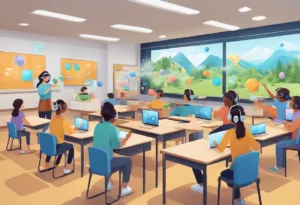
Augmented Reality (AR) is a powerful tool that can transform the learning experience by providing an interactive and engaging environment for students. Here are some tips for implementing AR in your learning environment.
AR Tools and Resources
To get started with AR, you will need the right tools and resources. AR apps are available for both tablet and mobile devices, and there are many resources available online to help you choose the right apps for your classroom. Some popular AR apps for education include “Dinosaur 4D+,” which allows students to view 3D dinosaurs, and “Elements 4D,” which allows students to explore chemical elements in a unique way.
Choosing the Right AR Apps
When choosing AR apps for your classroom, it’s important to consider your learning objectives and the needs of your students. Look for apps that align with your curriculum and provide opportunities for hands-on learning. Consider the age and skill level of your students when selecting apps. Some AR apps may be too complex for younger students, while others may not provide enough challenge for older students.
Integrating AR with Existing Curricula
Integrating AR with your existing curricula is a great way to enhance student learning and engagement. AR can be used in a variety of subjects, including history, science, and art. For example, in a history lesson, students can use AR to explore historical sites and artifacts, bringing the past to life. In a science lesson, students can use AR to explore the human body or the solar system. In an art lesson, students can use AR to create 3D models of their artwork.
AR is a powerful tool that can transform the learning experience by providing an interactive and engaging environment for students. By choosing the right apps and integrating AR with your existing curricula, you can enhance student learning and engagement in a variety of subjects.
Benefits of AR for Student Engagement
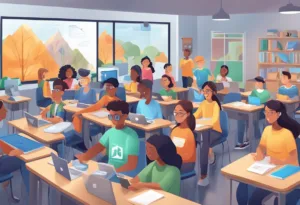
Augmented Reality (AR) is transforming the way students learn by enhancing their engagement and conceptual understanding. With AR, students can interact with 3D models and objects, which makes learning more interactive, memorable, and fun. In this section, we will look at some of the key benefits of AR for student engagement.
Enhancing Conceptual Understanding
AR enables students to visualize complex concepts and ideas in a way that was not possible before. By overlaying digital information onto the real world, students can see how abstract ideas, such as the structure of atoms or the human anatomy, work in a tangible way. This approach enhances their conceptual understanding and makes learning more engaging.
Interactive 3D Models and Objects
AR allows students to interact with 3D models and objects, which makes learning more interactive and fun. By manipulating these models, students can explore different scenarios and experiment with different variables. For example, students can use AR to explore the solar system, manipulate the planets, and see how they interact with each other.
Motivation and Memorable Learning
AR makes learning more engaging and memorable by providing students with a personalized and interactive learning experience. By using AR, students can explore different scenarios and experiment with different variables, which makes learning more fun and motivating. Moreover, the interactive and immersive nature of AR makes learning more memorable, as students are more likely to remember what they have learned.
AR is a powerful tool for enhancing student engagement and conceptual understanding. By using AR, students can interact with 3D models and objects, which makes learning more interactive, memorable, and fun. Moreover, the personalized and interactive nature of AR makes learning more engaging and motivating, which leads to better learning outcomes.
AR for Specialized Education
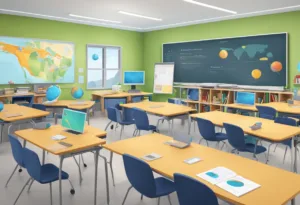
Augmented Reality (AR) technology has been increasingly used in specialized education, providing immersive and interactive experiences to learners. AR can be used in various fields, including medical and healthcare training, engineering and technical skills, art, and historical education.
Medical and Healthcare Training
AR technology provides medical students and healthcare professionals with a unique opportunity to learn and practice surgical procedures in a risk-free environment. AR can simulate surgical procedures, allowing learners to practice and develop their skills before performing surgeries on real patients. AR can also be used to teach anatomy, allowing students to visualize and interact with 3D models of organs and body systems.
Engineering and Technical Skills
AR technology can be used to train individuals in various engineering and technical skills. AR can provide real-time visualizations of complex machinery and equipment, allowing learners to understand the inner workings of these systems. AR can also provide step-by-step instructions for assembling and disassembling machinery, making it easier for learners to understand and remember the process.
Art and Historical Education
AR technology can be used to enhance art and historical education by providing learners with immersive experiences. AR can bring artifacts, historical events, paintings, and sculptures to life, allowing learners to interact with them in a unique way. AR can also provide learners with a virtual tour of historical sites and museums, providing a more engaging and interactive experience than traditional methods.
AR technology has numerous applications in specialized education, providing learners with immersive and interactive experiences. AR can be used in medical and healthcare training, engineering and technical skills, art, and historical education, among other fields. With the continued development of AR technology, the possibilities for specialized education are endless.
Enhancing Collaboration and Communication
Collaboration and communication are critical components of education, and AR technology can help enhance both. AR can provide a more immersive and engaging experience for group projects and teamwork, allowing students to work together more effectively. AR can help students develop communication skills that are essential for success in both academic and professional settings.
Group Projects and Teamwork
AR technology can provide students with a more immersive and interactive experience when working on group projects or in teams. By using AR, students can collaborate in real-time, visualizing and manipulating 3D models in a shared virtual space. This can help students better understand complex concepts and work together more effectively.
Furthermore, AR can help students develop teamwork skills, such as leadership, communication, and problem-solving. By working together in an immersive and engaging environment, students can learn how to collaborate with others, delegate tasks, and resolve conflicts.
Developing Communication Skills
AR technology can also help students develop communication skills that are essential for success in both academic and professional settings. By using AR, students can practice presenting and communicating complex ideas in an engaging and interactive way. This can help students develop confidence in their communication skills and improve their ability to convey ideas to others.
AR can help students develop active listening skills, as they must pay close attention to the virtual environment and respond to the actions of other students. This can help students become better listeners and more effective communicators, which are essential skills for success in any field.
AR technology has the potential to enhance collaboration and communication in education. By providing a more immersive and engaging experience, AR can help students work together more effectively and develop essential skills for success in both academic and professional settings.
Accessibility and Inclusion in AR
As Augmented Reality (AR) technology continues to expand its reach in the education sector, it is essential to ensure that it remains accessible and inclusive for all students. AR can be a valuable tool for students with diverse learning styles and special needs, but it is crucial to keep in mind the principles of accessibility and inclusive education.
Supporting Diverse Learning Styles
AR can be an excellent tool for supporting diverse learning styles. For example, some students may be visual learners who benefit from seeing concepts in a more tangible way. AR can provide a more immersive and interactive learning experience, allowing students to visualize and interact with concepts in a way that traditional methods cannot. AR can provide a more engaging experience, which can help students stay focused and motivated.
To ensure that AR is accessible to all students, it is essential to consider factors such as language, color contrast, and font size. By making these adjustments, AR can be more easily understood and navigated by students with different learning styles.
AR for Students with Special Needs
AR can also be a valuable tool for students with special needs. For example, students with hearing impairments can benefit from AR’s visual and interactive nature. AR can provide a more engaging experience for students with attention deficit hyperactivity disorder (ADHD), helping them stay focused and on task.
However, it is crucial to keep in mind the principles of inclusive education when using AR with students with special needs. This means ensuring that AR is accessible to all students, regardless of their abilities. For example, AR experiences should be designed with considerations for students with mobility impairments, such as ensuring that they can be navigated using assistive technology.
AR has the potential to be a powerful tool for supporting diverse learning styles and students with special needs. However, it is essential to keep in mind the principles of accessibility and inclusive education to ensure that AR is accessible to all students. By doing so, we can help ensure that all students have access to the benefits of AR technology.
AR Content Creation and Development
Creating engaging and educational AR content requires a combination of technical skills and creative vision. Fortunately, there are several platforms available that make AR development accessible to educators and content creators alike.
Using Platforms like Unity for AR
Unity is a popular platform for AR development that offers a range of features and tools for creating interactive experiences. With Unity, you can create 3D models, animations, and other digital assets that can be integrated into your AR content. Unity also offers a range of plugins and extensions that can help simplify the development process and add advanced functionality to your projects.
Creating Engaging and Educational Content
When creating AR content for education, it’s important to strike a balance between engagement and educational value. AR can be used to create immersive and interactive experiences that capture students’ attention and make learning more engaging. However, it’s also important to ensure that the content is aligned with educational objectives and provides real value to students.
To create effective AR content, you should start by identifying clear learning objectives and designing your content around them. You should also consider the age and skill level of your audience, and design your content accordingly.
In addition, you should leverage the unique capabilities of AR to create experiences that are not possible with traditional teaching methods. For example, you can use AR to create simulations and visualizations that allow students to explore complex concepts in a more intuitive and immersive way.
AR content creation and development is a complex process that requires a combination of technical and creative skills. However, with the right tools and approach, educators and content creators can leverage AR to create engaging and effective educational experiences.
Future of AR in Education
As technology advances, the future of AR in education looks promising. Emerging trends in edtech indicate that AR will continue to play a significant role in transforming the education industry. AR technology is becoming more accessible, and with the rise of mobile devices, students can now access AR-enabled applications and content from anywhere.
Emerging Trends in Edtech
One of the emerging trends in edtech is the use of AR in personalized learning environments. With AR technology, students can create their own learning environments, which can be customized to their individual learning styles and preferences. This approach to learning has been found to be more effective than traditional classroom learning, as it allows students to learn at their own pace and in their own way.
Another emerging trend is the use of AR in gamification. Gamification is the use of game-based elements in non-game contexts to engage and motivate learners. AR technology can be used to create immersive game-based learning experiences, which can be used to teach complex concepts and skills.
Policy and Future Research Directions
Policymakers and researchers are also exploring the potential of AR in education. Policymakers are looking at ways to integrate AR technology into the curriculum, while researchers are exploring the impact of AR on student learning outcomes.
Future research directions include exploring the use of AR in collaborative learning environments. AR technology can be used to create shared virtual spaces, where students can collaborate and learn from each other. This approach to learning has been found to be effective in improving student engagement and motivation.
The future of AR in education looks bright. As technology continues to advance, AR technology will become more accessible and affordable, making it easier for educators to integrate AR into their teaching practices. As policymakers and researchers continue to explore the potential of AR in education, we can expect to see more innovative uses of this technology in the classroom.
Frequently Asked Questions
What is AR in project management?
AR in project management refers to the use of augmented reality technology to assist in the planning, design, and execution of projects. AR can provide project managers with real-time information about the status of a project, allowing them to make informed decisions and adjust plans as needed. It can also be used to visualize project designs and simulate different scenarios, helping teams to identify potential issues and find solutions more quickly.
What is the difference between AR and VR?
AR and VR are both technologies that involve the use of digital information to enhance the user’s experience. The main difference between the two is that AR overlays digital information onto the real world, while VR creates a completely immersive digital environment. AR is typically used to enhance real-world experiences, while VR is used to create entirely new ones.
How to learn AR design?
To learn AR design, you can start by familiarizing yourself with the tools and technologies used in the field, such as Unity, Vuforia, and ARKit. You can also take online courses or tutorials to learn the basics of AR design and development. It can be helpful to study examples of successful AR applications and analyze their design and functionality.
What does AR design stand for?
AR design stands for augmented reality design. It refers to the process of creating digital content that can be overlaid onto the real world using AR technology. AR design involves creating 3D models, animations, and other digital assets that can be integrated into real-world environments to enhance the user’s experience.
What are the disadvantages of augmented reality in education?
One of the main disadvantages of augmented reality in education is the cost of implementing the technology. AR devices and software can be expensive, making it difficult for schools and educators to adopt the technology. AR can be distracting and may take away from the learning experience if not used properly. There is also a learning curve associated with using AR technology, which can be a barrier for some students and teachers.
What are the benefits of AR in the classroom?
AR can provide a number of benefits in the classroom, including increased engagement and motivation among students, enhanced visualization of complex concepts, and improved retention of information. AR can also provide students with hands-on learning experiences that are more interactive and immersive than traditional teaching methods. AR can be used to create personalized learning experiences that cater to individual student needs and learning styles.

